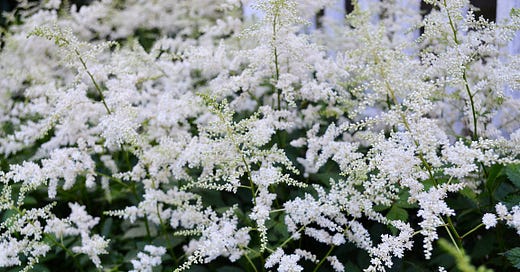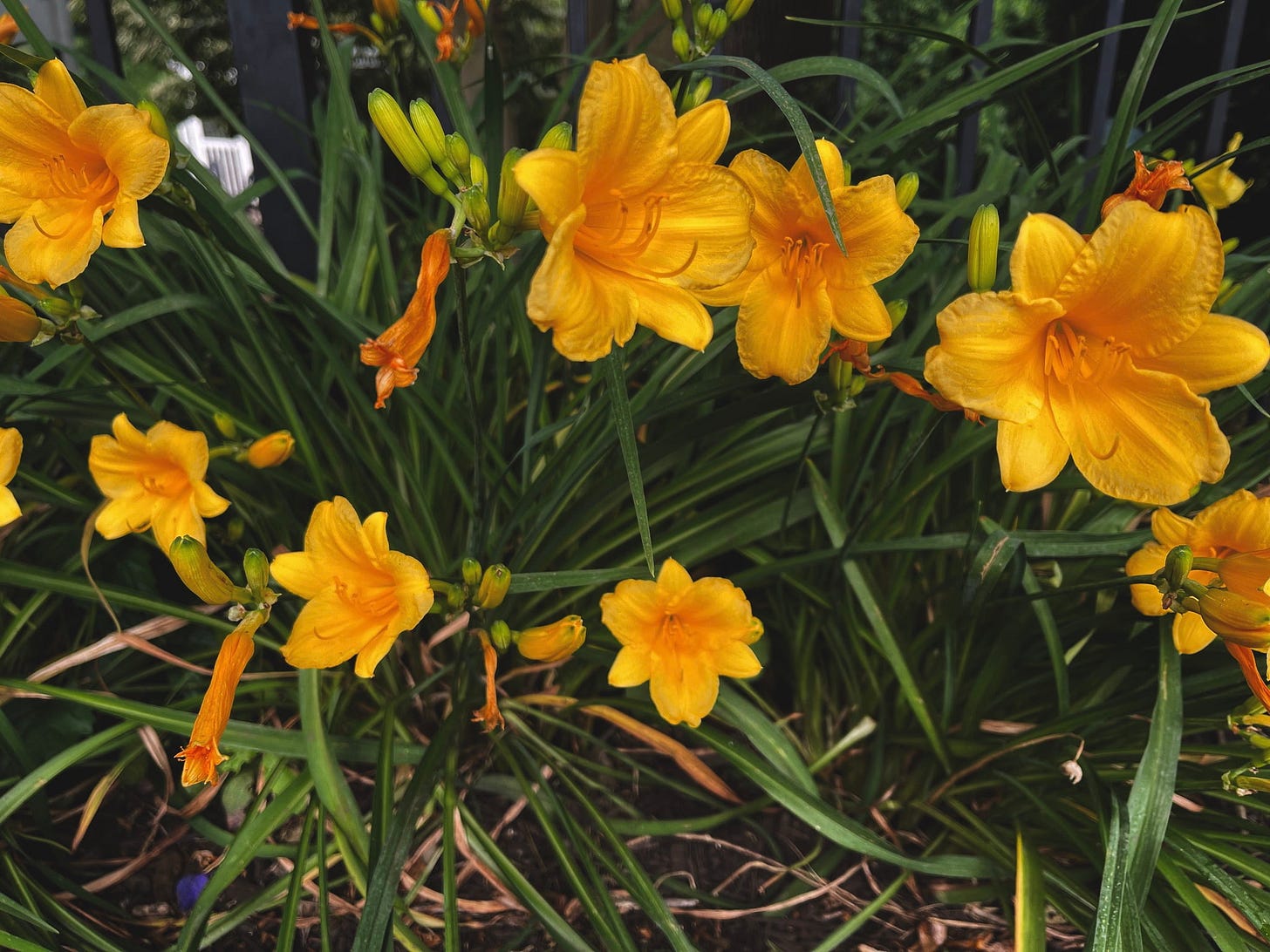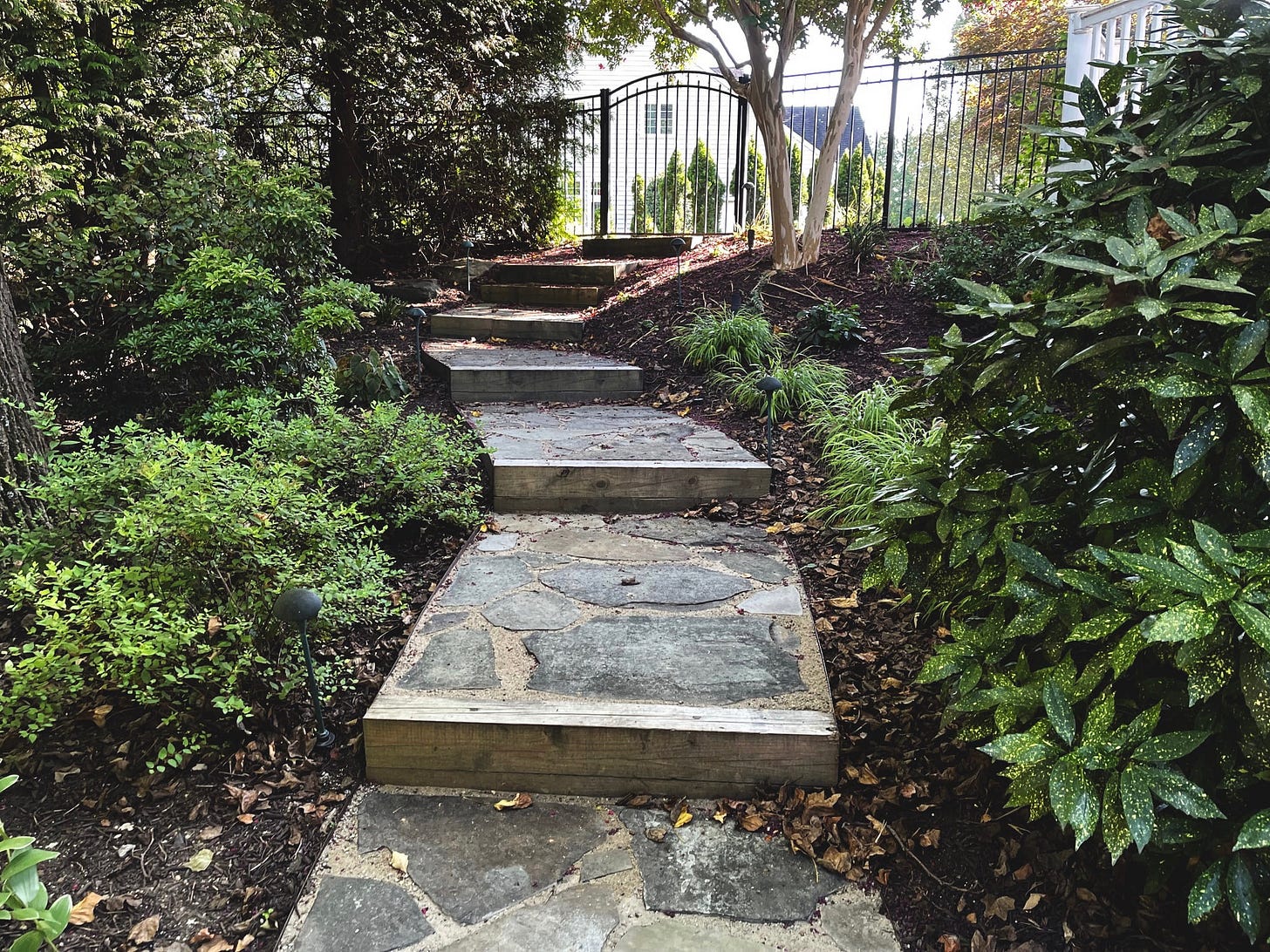About This Newsletter
Ken Solow makes the case that gardening is a challenging and fun hobby for a Type A personality... even if you inevitably kill a lot of innocent plants along the way.
There is a lot about gardening that I don’t know. The learning curve for trying to keep plants alive is steep, or I should say, its been steep for me over the past two seasons. I didn’t realize there was so much to know. I mean, how was I supposed to know that it takes skill to be good at gardening? It’s sad that euthanizing plants seems to be the skill that I do possess, a talent and a gift that I’m not particularly proud of. It’s not easy to watch plants die when you are trying your best to grow them, which is one of the reasons that when they do live, and even thrive, its so satisfying.
As you might surmise, this newsletter is not meant for gardeners looking to learn the advanced skills needed to be a master gardener, a true expert at their craft. In a previous life I managed money for a living. As the Chief Investment Officer of a firm that managed $2.5 billion in assets for wealthy clients and who oversaw a five-person staff of highly trained analysts, I used to read two to three hours of investment research every day. I did that, with few exceptions, for about 25 years. Somewhere along the way I began to know more about the financial markets than most of my clients, which didn’t necessarily make me an expert, but it did make me the smartest guy in the room on any given day. Gradually, after many years, perhaps I did become an expert. I will let others opine on the subject. I think it’s fair to say that I’m something of an expert on becoming an expert. I have some thoughts to share on how it feels as you begin your journey to become an expert gardener, and the trials and tribulations you are likely to face on the way to knowing what you are talking about. If you are interested in the experience of being out in the garden, I’m a good guy to hang out with.
Why “Painful”?
I see many similarities between tending a portfolio of 25 securities and tending a garden with thirty to forty different types of plants. It’s easy to become obsessed with both. (Type A’s are prone to obsessing.) I have graduated from being a disinterested observer in how a landscape company designed and installed my garden, to wanting to know every detail about the plants I spend time with almost every day. I’ve experienced enough success to believe I can be an expert gardener, and perhaps more importantly, to know that it’s fun to help plants mature into beautiful, flowering, masterpieces.
This newsletter is an excellent place for you to learn about mistakes that may be just ahead as you become a gardening expert, told by a guide who has made most of them over the past year and a half. Thankfully, the internet is teeming with experts covering the “how to” details of becoming an expert gardener. Blogs, magazines, books, articles, and apps for your phone provide virtually everything you need to know. For me, those resources, along with making friends at my local garden nursery where the employees are passionate about helping you decipher the mysteries of getting plants to grow, is more than enough information to succeed... I hope. Of course, it’s possible that being a great gardener is more of an art than a science, in which case I might be in a lot of trouble, or I might just surprise myself and turn out to be quite an artist. In either case, this newsletter is my way of letting you know how it’s going for me so far.
Why Type A’s?
My typical newsletter post averages 1,300 words, less than a six-minute read. Even a confirmed Type A can sit still long enough for that, especially if the price is right. If you’re recently retired, or are about to retire, you may be dealing with a somewhat bewildering set of choices of how to manage your time to give it structure and meaning after working for your entire career. As a confirmed Type A myself, I couldn’t imagine an activity that would be less interesting than gardening. I mean, we all know what gardening is about. Buy a plant, or worse, buy a seed, dig a hole, add some water, sit around, and patiently wait, and wait, and wait, for a plant to grow. It sounded like the definition of hell to me. I suspect you already know if you are a Type A or not. If you are a Type A, you probably understand my previous reluctance to engage in anything having to do with gardening, other than paying for someone else to do it in the shortest possible amount of time.
In this newsletter I’m going to explain why I’ve come to believe that gardening is a great activity for a Type A personality. It offers many of the challenges that Type A’s love to tackle, but it also offers a kind of therapy for those of us who need to learn how to relax. If you are a Type A facing similar challenges in structuring your life post-retirement, spending some time in the garden with a fellow Type A just might be helpful. If you’re not a Type A, hopefully you will find some of the newsletters about gardening to be entertaining. If you happen to be in a relationship with a Type A, you might find descriptions of these trials and tribulations to be worthy of a read. My guess is you will recognize all the Type A behavior problems, and on behalf of Type A’s everywhere, I ask that you keep your laughter to a minimum. Perhaps you can subscribe to this letter on behalf of your loved one, and while you’re at it, suggest a good therapist.
My statistics on returning dead plants for a refund tell me that I’m getting better at this gardening game. You might note that using the metric of dead plants is about as low as anyone could set a bar for garden success. Others might use overall design, how the plant textures work with each other, how the colors contrast or complement each other, and other more professional and artistic assessments to determine their success as a gardener. But for me, for now, keeping my plants alive is goal number one. Why not subscribe to this free newsletter, and live vicariously through my successes and failures?
Housekeeping
I started writing in late summer of 2023, and the reader will find that many of the posts are tied to the calendar in one way or another. I believe the message is clear in every newsletter, even if you happen to be reading about autumn gardening challenges in a post that is published in the middle of the winter. Forgive me, but I didn’t know I would be writing about my gardening adventure until now. I think I will be caught up with the calendar by spring, and the posts might seem more relevant to the season. If you follow me, I’ll be taking you for a tour around my garden as we get to know each other in a series of posts called Morning Patrol, and I’ll be interrupting our tour with posts about some informative, helpful, and entertaining subjects. I’ll be sure to let you know where we are, so you don’t get lost in the garden, or the stories I like to tell. I’m not sure that misery really does love company, but if it does, then I hope you will find some succor in reading about my failures, and of course, my successes. As in fishing and golfing, the other two pursuits in my new life as a retiree, what fun is it if you can’t brag a little about your success?
I’m going to post three newsletters now so you can get to know me, and then I’ll be posting once each week until spring. Next up is some interesting history about my garden, including a close look at the original landscape designs. If you’ve never worked with a landscape designer, and even if you have, I think you’ll find it interesting.





